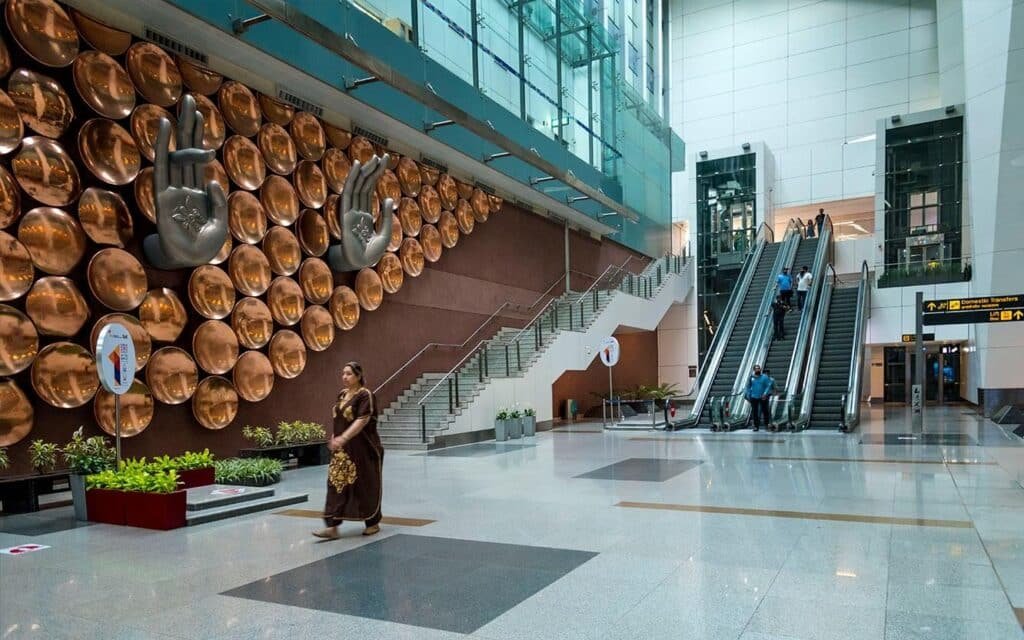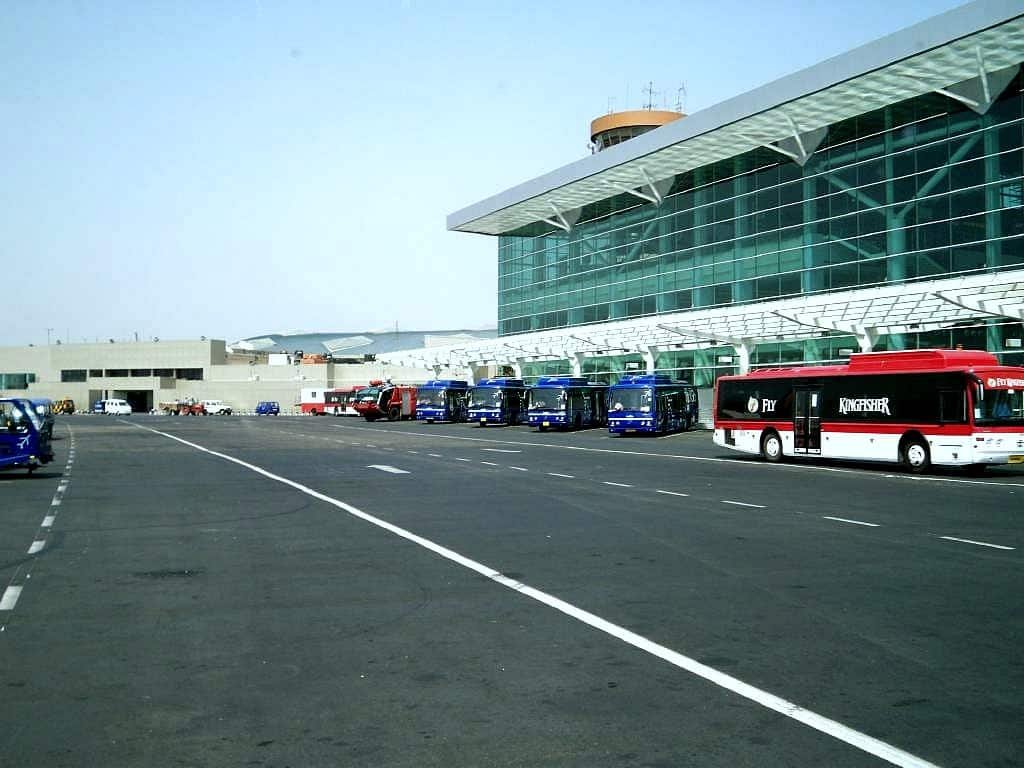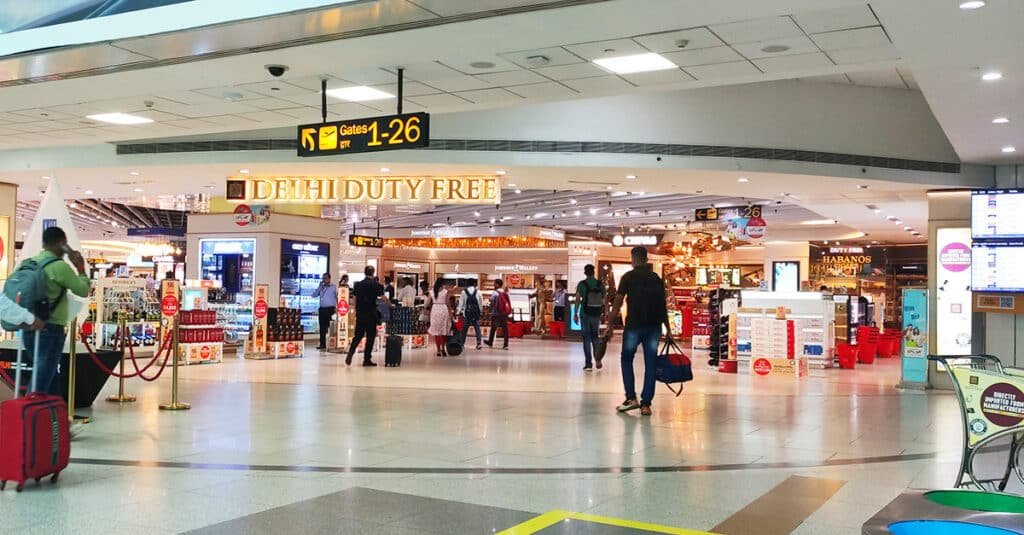- SUMMARY
- Delhi Airport is looking to increase its peak runway capacity.
- The airport is planning to increase its international passengers capacity.
- It is planning a Automated People Mover (APM) to enhance inter-terminal mobility.
Delhi Indira Gandhi International Airport (DEL) is currently the largest airport in India in terms of passenger handling capacity. The airport operator has set targets to increase the runway capacity over the next 36 months. It is planning to cater to more international traffic.
Delhi Airport: Looking For More International Passengers
Airport operator- Delhi International Airport Limited (DIAL) is looking to enhance the international passenger handling capacity of the airport by 40-50% in the next 12 months. Within the next three years, it is looking to increase its peak runway capacity by 30%.
At present, the airport has the capability to handle 105 million passengers. In FY24, it handled 73.7 million passengers. On the international front, it can handle 22 million passengers. It has almost reached the 20 million mark in terms of number of international passengers. Now, with very little capacity remaining, it is looking to increase its international capacity.

DIAL Chief Executive Officer Videh Jaipuriar said that out of its international network, 20 percent of the passengers are connecting passengers, who are transiting to a different international airport. DIAL is aiming to increase this number to 30-35%, in alignment with the aim to become a hub airport.
To increase the capacity from 66 to 100 million, the airport is working on a Rs 9,800 crore project. As part of this project, it operationalized the fourth runway and constructed a revamped Terminal 1.
Looking to Optimize Runway Operations
As of now, Delhi remains the only airport in India to have four runways. However, the operator believes that it is unable to use these runways at full potential. Hence, it has brought the Airports Authority of India (AAI) and consultants on board to optimize the runway operations strategy.

Within the next three years, the airport is aiming to increase its peak Air Traffic Movements (ATMs) from 84 to 110 per hour. This accounts for a 30% rise. Each takeoff or landing is counted as a single Air Traffic Movement. Suppose an aircraft lands and departs after some time, it will be counted as two ATMs.
With increased runway capacity, the airport will have more slots. It is aiming to have 2,000-2,100 slots after the completion of the optimization process. Currently, Delhi has around 1,500 slots.
One of the runways at Delhi Airport is currently undergoing maintenance. By July month, along with the commencement of Terminal 1 operations, all four runways will be operational.

Airlines specifically Air India and IndiGo are growing rapidly. To support the expansion plans of these airlines, the airport operator has started working on a 10-year master plan for the next phase of growth.
At the CAPA India Aviation Summit, Videh was asked if airlines would be allotted different terminals at Delhi Airport. He said that nothing as such has been decided at present. The airport has the flexibility for anything, whether it is dedicated terminals for airlines or dedicated terminals for domestic and international flights.
Funding Required for APM
Delhi Airport is looking to reduce the transfer time for passengers. For any hub, this is one of the most important factors alongside the seamless processes. In order to enhance inter-terminal mobility, the operator is planning for a terminal train or an Automated People Mover (APM).
This APM will connect all the three terminals. Instead of depending on buses and taxis, passengers can use this APM for seamless connections.

Jaipuriar said that the commercial evaluation for this APM has been conducted. There will be a requirement of funds for this project. DIAL has showcased the project to the government. Once it assesses the overall needs, it will approach the government for one-time funding support for APM.
In addition, the airport is in the process of introducing the Airport Operations Centre (APOC) system that proactively predicts the expected footfall of passengers at the airport based on data. This will help in the decongestion of the airport and will allow the authorities to prepare better during peak hours.
Conclusion: Delhi Airport Future Plans
Delhi Airport, the largest airport in India has some future plans. The airport is looking to increase its peak runway capacity by 30% within the next 3 years. It is eyeing slot increment by the same margin. 20% of international passengers are transiting to another airport. The airport operator is aiming to have 30-35% transit passengers in order to create Delhi as a hub. APM and APOC are planned at the airport for the future.
What do you think about the future plans of Delhi Airport? Discuss in the comment section.
With Inputs From Indian Express
Featured Image Credits: Delhi Airport via Facebook
Read the Latest Aviation News on Times of Aviation
Read More: IndiGo: Improved Road Infrastructure Will Challenge the Domestic Air Cargo Segment
Website Disclaimer: Times of Aviation does not claim copyright ownership of any information or images used on this website. Usage of content falls under fair use.


